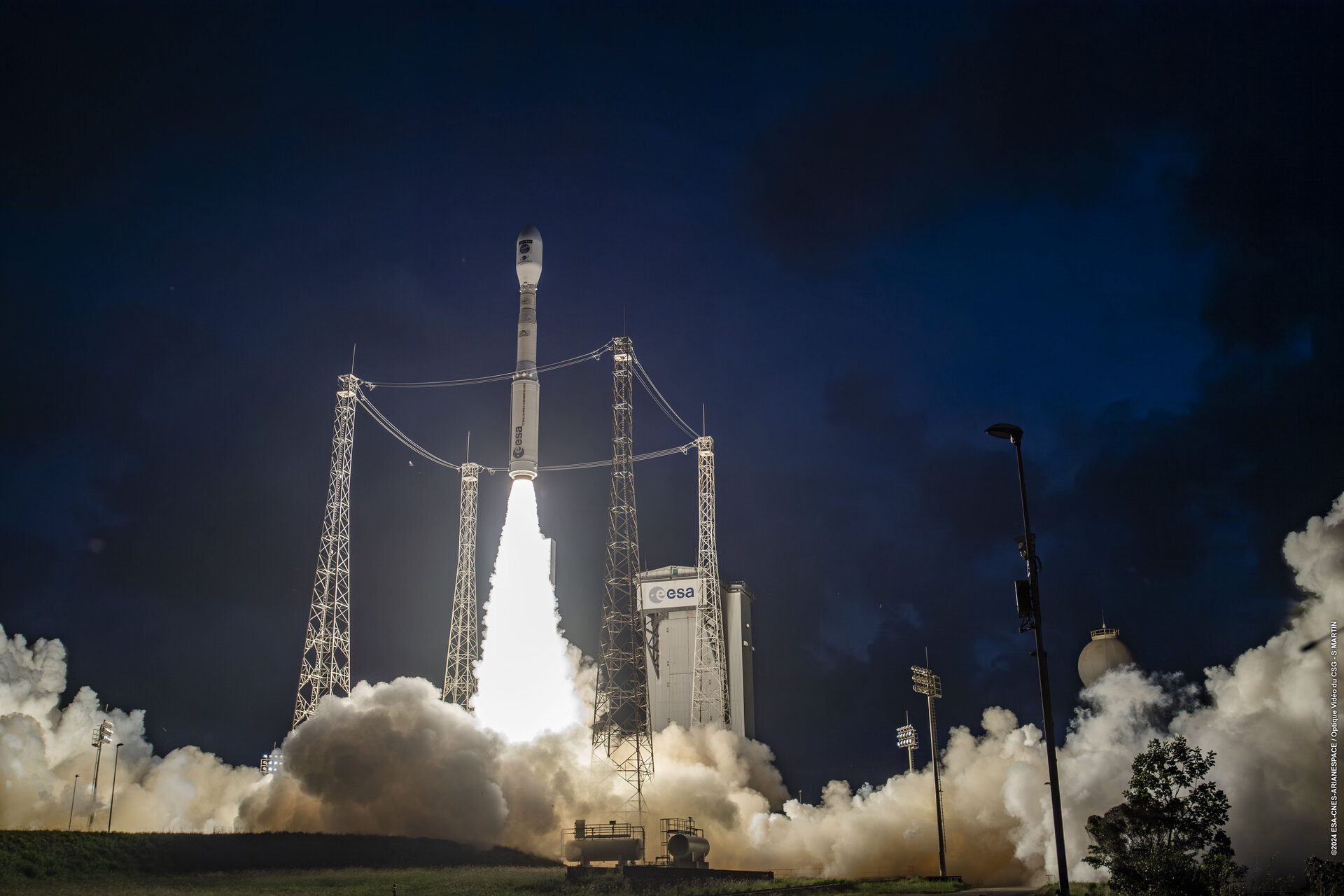Despite having just had its Echostar XVI (Echostar 16) communications satellite successfully launched by an ILS Proton M/Breeze M, on 20 November, nevertheless, EchoStar Corp has apparently lost faith with its “usual” launch provider and has now jumped ship to Arianespace. On 26 Novermber, the major US commercial satellite operator, Echostar, announced that it had signed a deal for Arianespace to provide mulitple launches for Echostar satellites. This multi-launch, multi-year deal shows that Arianespace can still compete for business despite its own cost issues. The agreement was signed after an initial one-off contract allowed a Ariane 5 ECA to successfully launched the Echostar 17 satellite in July (along with Europe’s weather satellite MSG 3).
“In July, EchoStar’s wholly owned subsidiary, Hughes completed the successful launch of EchoStar XVII (Echostar 17) with Arianespace, giving us confidence in Arianespace’s ability to execute on future launches,” said Anders Johnson, president of EchoStar Satellite Services in a news release.. “The Ariane 5 vehicle has been a reliable, flight-proven launch system. We look forward to relying on Ariane 5 to deliver on-time success in the execution of our near term expansion programs.”
For ILS (International Launch Services), the launch vehicle marketing firm which is majority owned by the Russian rocket manufacturing firm Khurnichev, the Echostar agreement with Arianespace is a blow. While Arianespace’s Ariane 5 is still more expensive to fly on than a Proton, importantly this divide is reducing as Russian inflation chips away at this ILS advantage. More importantly,the Proton launch vehicle continues to have reliability issues. While its failure rate is “steady” it cannot match the recent record of Ariane 5 which has not had a failure in ten years and 52 flights. In other words, as it competes with Proton and new low cost contender SpaceX, Arianespace can at least compete of quality and its proven ability to “get your satellite there”. Before the deal was made public, it is noted that ILS decided to replace its President Frank McKenna with fellow ILS executive Phil Slack.
The news of this multi-launch agreement will also be seen as a boost for the new ESA policy of pursuing the Midlife Evolution (ME) upgrade of the Ariane 5 which will boost the ultimate Geostationary Transfer Orbit (GTO) payload of the launch vehicle from circa 10 tonnes to circa 12 tonnes. This should allow more than two heavy communications satellites to be carried at one time and will thus avoid the scheduling difficulties that Arianespace is having in trying to match different sizes of satellites now that satellites are gaining in size at the larger end of the range..







